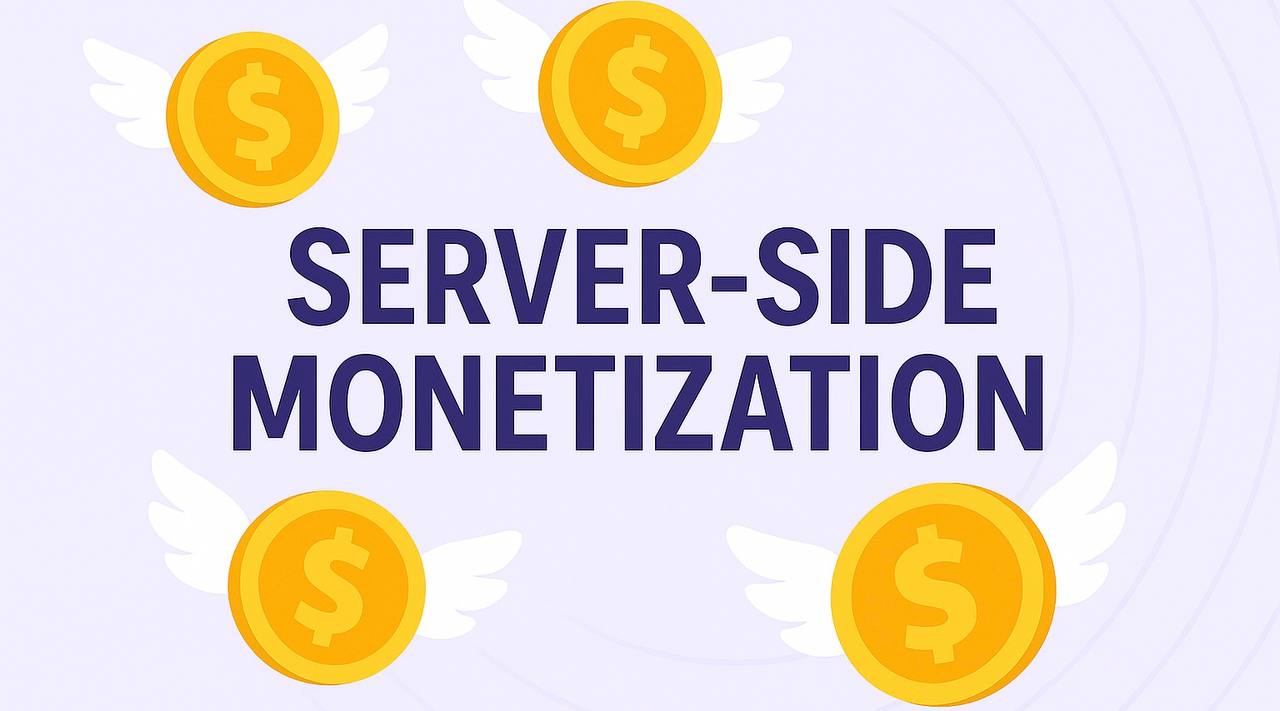The mobile and desktop software economy is evolving toward less intrusive and more privacy-compliant monetization methods. Traditional ad formats embedded directly into applications increasingly fall afoul of new compliance frameworks, particularly with Google Play’s DMA updates and advertising transparency requirements scheduled for 2025. Developers of VPN services, cloud clients, desktop software, and browser extensions face a pressing challenge: how to monetize traffic effectively without modifying the front-end or affecting user experience.
The server-side monetization SDK approach answers this challenge. Instead of relying on UI-injected ads or intrusive tracking, background monetization is performed entirely off-device. In this model, the SDK is integrated into backend infrastructure, typically within the proxy-relay layer of a VPN or client-server stack. This design allows monetization to occur invisibly from the user’s perspective, minimizing battery drain, preserving CPU efficiency, and remaining undetectable at the UX level. It also enables developers to retain control over user session policies, bandwidth allocation, and revenue segmentation by Sub-ID.
Background Monetization: Model, Relevance, and Transition
The SDK-based background monetization model typically operates by routing anonymized network traffic through a controlled relay or proxy infrastructure. This traffic is then resold via peer-to-business (P2B) networks to vetted partners with strict data compliance constraints. As a result, monetization occurs in the background—without requiring users to click, view, or interact with ads. This shift aligns well with increasing consumer fatigue over ad-saturated experiences and offers a more stable monetization stream for developers of infrastructure-heavy applications such as desktop VPNs or multi-platform cloud clients.
Unlike user-facing monetization tools, a server-side SDK introduces no code into the front-end layer. Instead, its main interaction surfaces are backend systems such as AWS Cognito for user authentication and session tokenization, proxy throttling engines for usage limits, and analytics dashboards for calculating key metrics such as ARPDAU (Average Revenue Per Daily Active User), LTV (Lifetime Value), and eCPM (Effective Cost Per Mille).
Metrics That Matter: Forecasting with AppsFlyer Benchmarks
According to recent forecasts from AppsFlyer, monetization trends in 2025 will tilt heavily toward hybrid and SDK-based revenue models, with app developers optimizing for maximum LTV and eCPM while maintaining UX integrity. The most successful monetization configurations are those that integrate background revenue models into existing analytics and lifecycle frameworks.
In use cases involving background traffic, such as VPN services bundled with puzzle or casual games, ARPDAU values between €0.015 and €0.03 are realistic when using server-side SDKs. LTVs per active user can exceed €2.00 within 60–90 days of onboarding, especially if coupled with paid subscription tiers. Effective eCPMs for backend traffic commonly fall in the €5–€10 range, depending on session quality, geographic distribution, and throttle policy calibration.
By attributing each session with a Sub-ID, developers can track revenue streams with cohort-level granularity.
This allows for dynamic LTV optimization and facilitates the testing of alternative monetization mixes, including direct licensing, freemium upgrades, and server-load-based usage fees.
SDK Integration in Practice: The Infatica Case
Infatica SDK offers a comprehensive server-side monetization solution tailored for developers seeking non-intrusive, compliant monetization for Windows, macOS, browser extensions, and headless cloud clients. The SDK integrates directly with backend proxy-relay servers, routing user traffic through the Infatica network and logging anonymized session metadata for real-time analytics.
One of the standout features is the ability to monetize 100% of users without requiring opt-in banners, tracking prompts, or advertising disclosures. Traffic routing and monetization are governed by dynamic throttle policies, enabling operators to define safe bandwidth caps and session durations per user segment. Combined with native support for Sub-ID tagging, Infatica enables highly granular LTV tracking and lifetime cohort analysis.
Furthermore, Infatica’s compliance stack ensures adherence to GDPR, CCPA, and DMA policies through anonymization protocols and optional AWS Cognito integration for secure authentication and session mapping. This facilitates the construction of a fully compliant monetization flow, even in regulatory-sensitive markets such as the EU or California.
Competitive Overview: SDK Models in Perspective
Among available SDK-based monetization models, peer-to-business (P2B) stands out for its unobtrusive nature. Unlike user-consent-based idle monetization platforms (such as Honeygain) or API-heavy frameworks (such as Proxyrack), the P2B model enables revenue without active user participation. It is the quietest approach in the market, as monetization occurs entirely at the server level and does not affect device performance, battery life, or UI responsiveness.
While Honeygain and similar services operate on a consumer opt-in basis, often requiring the user to download standalone applications, Infatica’s SDK is directly embedded into the backend of the host application or service. This architectural difference results in significant advantages in control, scalability, and compliance.
Real-World Scenario: Monetizing a Puzzle Game via Backend

To illustrate the model in practice, consider a puzzle game with an embedded VPN feature. With 50,000 daily active users and an average backend session time of 25–30 minutes, the integration of Infatica SDK into the proxy backend yielded an estimated ARPDAU of €0.015. Within the first 30 days, this translated into €22,500 in monetization revenue, with no visible change in application behavior or user feedback.
Further segmentation of the user base allowed the operator to introduce a paid subscription offering to high-usage users, generating an additional €4,500 per month. The combination of SDK-based passive monetization and optional freemium upgrades provided a resilient and diversified monetization portfolio. The implementation required minimal engineering time, thanks to detailed documentation and cross-platform SDK support.
Addressing Developer Concerns
Despite its promise, server-side monetization models often raise concerns among developers regarding performance impact, user transparency, and platform compliance. In practice, these concerns are largely mitigated by the architecture of Infatica SDK.
Since traffic processing and monetization logic operate on the backend server infrastructure, there is no additional battery drain, CPU consumption, or network delay introduced at the user device level. The only interaction required from the user is initial session establishment, typically managed via a secure token or AWS Cognito handshake.
From a policy standpoint, Google Play’s upcoming transparency requirements do not currently extend to off-device monetization, as long as the monetization logic does not affect user experience or redirect traffic in a way that circumvents ad disclosures. By not embedding advertising code or monetization logic into the APK, developers reduce their policy exposure and risk of rejection under DMA rules or Play Console audits.
Compliance Strategy for Google Play 2025
In light of evolving regulation, server-side SDKs offer an elegant path to policy resilience. Because the monetization engine is hosted externally and operates independently of app distribution platforms, developers maintain complete autonomy in monetization choices.
Compliance checklists for 2025 include: anonymized data collection with optional consent; session authorization via secure protocols such as AWS Cognito; regional throttling and traffic controls; and full auditability of monetization flows. SDKs like Infatica provide prebuilt modules for these requirements, reducing legal and engineering overhead.
Conclusion: Infrastructure-Level Monetization for the Next Wave
Server-side SDK monetization represents a strategic shift for developers seeking to decouple user experience from revenue generation. By moving monetization logic to the backend, developers gain compliance, scalability, and UX continuity—without sacrificing profitability. Infatica’s SDK model, in particular, delivers high-performance monetization for infrastructure-heavy applications across desktop, mobile, and browser-based platforms.
As Google Play and global regulators continue to enforce stricter standards, adopting SDK-based monetization will become not only advantageous—but necessary. For developers exploring app monetization without ads, desktop monetization, or game monetization models that prioritize privacy and performance, background SDKs offer a viable and future-proof solution.
For more technical details, integration support, or LTV modeling guides, explore our post on APK Monetization & Android Monetization 2025 or learn how we approach Android App Monetization.
Learn more about Infatica SDK: Contact Us | View SDK
